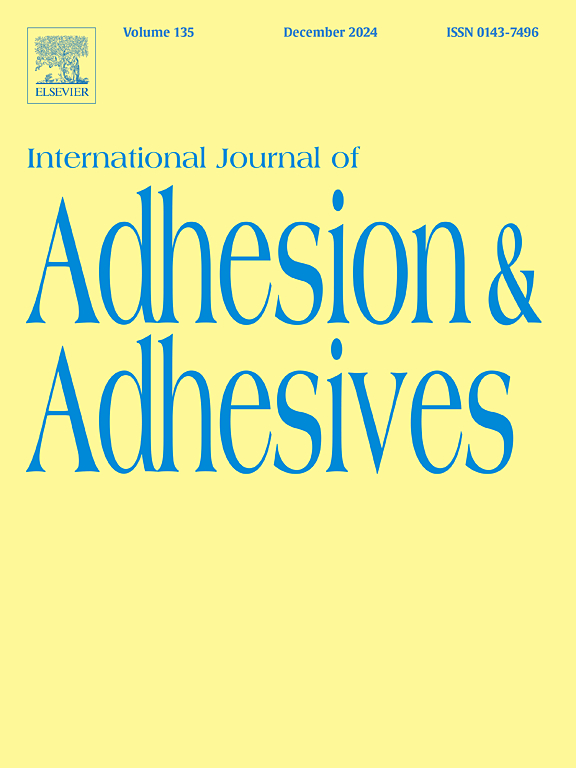Development of acrylic acid–agar-based adhesive hydrogel: Influence of tannic acid concentration on adhesion performance
IF 3.2
3区 材料科学
Q2 ENGINEERING, CHEMICAL
International Journal of Adhesion and Adhesives
Pub Date : 2025-06-16
DOI:10.1016/j.ijadhadh.2025.104088
引用次数: 0
Abstract
The present study aimed to develop a mechanically enhanced and biocompatible adhesive hydrogel utilizing acrylic acid and agar. N, N-methylene bisacrylamide (MBA) and tannic acid (TA) were employed as chemical and physical crosslinkers, respectively. The structural and chemical characteristics of the hydrogel were confirmed through scanning electron microscopy (SEM) and Fourier transform infrared (FTIR) spectroscopy, verifying its successful Synthesis via free radical polymerization. Rheological analyses, including frequency sweep, amplitude sweep, and creep recovery tests, were conducted to assess the viscoelastic and adhesive properties of the hydrogel. The findings revealed that specific polymeric chain interaction governed the adhesive behavior of the hydrogel. Furthermore, varying concentrations of tannic acid were investigated to determine their influence on adhesive performance, with results indicating that increasing TA concentration significantly enhanced adhesive properties. The adhesion strength followed the order: 36.8 > 21.06 > 13.04 > 7.75 > 4.31 kPa for TA ranging from 0.025 to 0 g, respectively. The synthesized hydrogel demonstrate superior approach, cost-effectiveness, high efficiency, and biodegradable nature which highlights their potential as an advanced adhesive material for future applications.
丙烯酸-琼脂基黏附水凝胶的研制:单宁酸浓度对黏附性能的影响
本研究旨在利用丙烯酸和琼脂制备一种机械增强型生物相容性黏附水凝胶。N, N-亚甲基双丙烯酰胺(MBA)和单宁酸(TA)分别作为化学交联剂和物理交联剂。通过扫描电子显微镜(SEM)和傅里叶变换红外光谱(FTIR)证实了水凝胶的结构和化学特征,验证了自由基聚合法制备成功。流变分析包括频率扫描、振幅扫描和蠕变恢复测试,以评估水凝胶的粘弹性和粘合性能。研究结果表明,特定的聚合物链相互作用控制了水凝胶的粘附行为。此外,研究了不同浓度的单宁酸对胶粘剂性能的影响,结果表明,增加TA浓度可显著提高胶粘剂的性能。粘接强度依次为:36.8 >;21.06比;13.04比;7.75比;0.025 ~ 0 g的TA值为4.31 kPa。合成的水凝胶表现出优越的方法、成本效益、高效率和可生物降解的性质,突出了它们作为未来应用的先进粘合材料的潜力。
本文章由计算机程序翻译,如有差异,请以英文原文为准。
求助全文
约1分钟内获得全文
求助全文
来源期刊

International Journal of Adhesion and Adhesives
工程技术-材料科学:综合
CiteScore
6.90
自引率
8.80%
发文量
200
审稿时长
8.3 months
期刊介绍:
The International Journal of Adhesion and Adhesives draws together the many aspects of the science and technology of adhesive materials, from fundamental research and development work to industrial applications. Subject areas covered include: interfacial interactions, surface chemistry, methods of testing, accumulation of test data on physical and mechanical properties, environmental effects, new adhesive materials, sealants, design of bonded joints, and manufacturing technology.
 求助内容:
求助内容: 应助结果提醒方式:
应助结果提醒方式:


